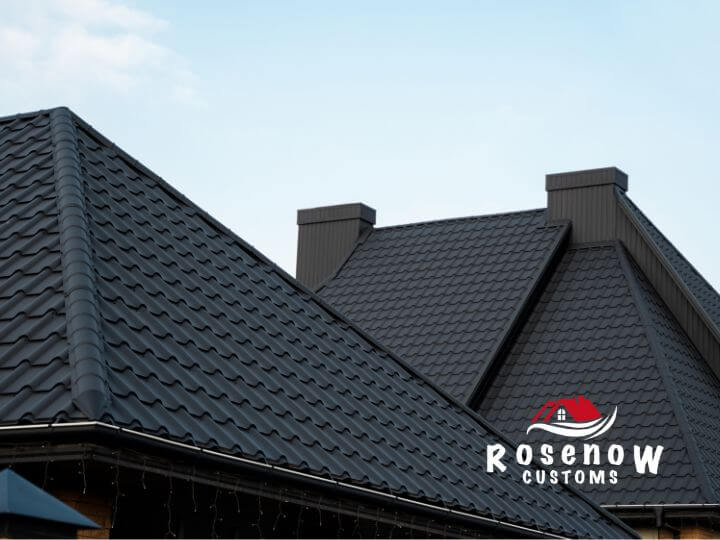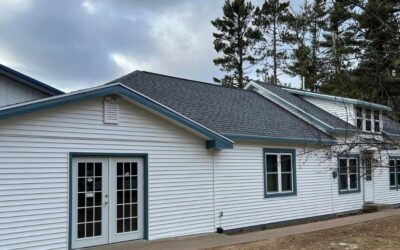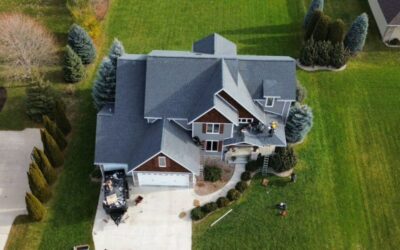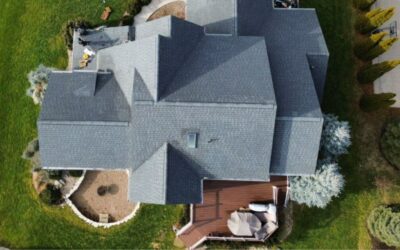Understanding the Life Expectancy of a Metal Roof
When it comes to selecting roofing materials, metal emerges as a top contender, thanks to its robustness, fire resistance, and energy-saving properties. Yet, one crucial aspect that often weighs heavily on the minds of property owners is the anticipated longevity of their chosen roofing material. In this article, we delve into the life expectancy of metal roofing, exploring its average lifespan, comparing the longevity of different metal roof types, and examining the factors that can impact this lifespan, insights that Rosenow Customs can attest to through their extensive experience. With this information at your fingertips, you’ll be well-equipped to make a well-informed decision about your roofing requirements.
General Lifespan of a Metal Roof
The lifespan of a metal roof can be quite diverse, typically spanning anywhere from 40 to 70 years. This range is influenced by the type of metal used and a variety of other factors, which we’ll delve into later in this discussion. In contrast, traditional roofing materials like asphalt typically last between 12 to 20 years, making metal roofing a significantly more enduring solution. This extended lifespan minimizes the need for frequent reroofing, thereby saving homeowners substantial costs and inconvenience over the long term. The resilience of metal roofing, its ability to withstand high winds, resist pests, and its immunity to cracking or corrosion when properly maintained, all contribute to its impressive lifespan. In essence, a metal roof is an investment that offers decades of reliable, hassle-free protection for your property.
Different Types of Metal Roofs and Their Lifespans
While the general life expectancy of a metal roof ranges from 40 to 70 years, the specific type of metal used can significantly influence this estimate. In the following sections, we’ll delve into the unique characteristics and life expectancies of three common metal roofing materials: Aluminum, Steel, and Copper or Zinc. This knowledge will empower you to make an informed decision about the best metal roofing material for your unique home and lifestyle.
Aluminum Roofs
Aluminum, a favored material for metal roofing, offers a unique blend of lightweight durability and corrosion resistance. This makes it an excellent choice for coastal homes, where salty air is a constant presence. Additionally, its heat-reflecting properties make it a popular option in warmer climates, contributing to energy efficiency and comfort.
Despite being thicker than steel, aluminum is a softer metal, making it prone to denting. To counteract this, most aluminum roofs come with a protective coating, enhancing their resilience and offering a wider range of color options.
In terms of longevity, a well-maintained aluminum roof can provide over 50 years of reliable service. This long lifespan, combined with its durability, makes it a sound investment for homeowners seeking both aesthetic appeal and long-term security.
Steel Roofs
When it comes to roofing materials, steel holds a prominent position due to its impressive strength and cost-effectiveness. It’s worth noting that steel roofing is not a one-size-fits-all solution; it’s segmented into three distinct categories: galvanized, Galvalume, and weathering steel (Corten), each offering unique advantages.
Galvanized steel, the most prevalent type, strikes a balance between cost and durability. This steel variant is fortified with a protective zinc layer to ward off rust, promising a lifespan of 60-100 years with diligent care.
Galvalume steel, a notch above galvanized, boasts a coating of zinc and aluminum, enhancing its resistance to corrosion. While it demands a slightly higher investment, it rewards homeowners with a lifespan exceeding 100 years.
Corten, or weathering steel, is the third variant. It earns its name from its unique ability to develop a rust-like appearance over time without sacrificing durability. This steel variant is less common in residential roofing but offers longevity comparable to Galvalume steel.
In a nutshell, the durability, lifespan, and cost-effectiveness of steel roofing make it a compelling choice for homeowners exploring metal roofing options.
Copper and Zinc Roofs
In the high-end spectrum of metal roofing, copper and zinc stand out. These metals are celebrated for their extraordinary durability, aesthetic allure, and resilience against weather elements. While their initial cost may be steep, their long-lasting nature and minimal maintenance requirements make them a wise investment over time.
A newly installed copper roof radiates a bright sheen, infusing a touch of luxury to any home. As it ages, it develops a patina, transforming into an elegant, greenish-blue hue. Copper roofs are resistant to cracking, shrinking, and erosion, and they boast an impressive lifespan. It’s not unusual for copper roofs to endure over a century, with some gracing historical buildings for several hundred years.
Zinc roofs, on the other hand, are lauded for their sustainability and durability. Zinc forms a protective patina when it reacts with carbon dioxide in the atmosphere, healing any scratches or physical damage and thus prolonging its lifespan. With proper care, a zinc roof can last between 80 to 100 years or even longer.
Both copper and zinc roofs are highly recyclable, adding to their eco-friendly credentials. However, their initial cost may not align with every homeowner’s budget. They are an ideal choice for those seeking a long-term investment that also enhances the aesthetic appeal of their home.
Factors Influencing the Lifespan of a Metal Roof
The longevity of a metal roof is not solely determined by the type of metal used. Other elements come into play, including the quality of installation, the level of maintenance, and the environmental conditions it is exposed to. These factors can either extend or reduce the lifespan of your metal roof. To make wise choices about your roofing solutions, it’s crucial to comprehend how these elements influence your roof’s life expectancy. Let’s explore these factors in greater depth in the subsequent sections.
Quality of Installation
The lifespan of your metal roof is significantly affected by the quality of its installation. No matter the metal type, a poorly executed or subpar installation can result in problems such as leaks, corrosion, or wind damage. Inefficient water drainage is another issue that can arise from an improperly installed metal roof, leading to standing water that can hasten rust and wear.
Therefore, it’s essential to select a seasoned roofing contractor proficient in metal roof installations. The longevity of your roof doesn’t just depend on the proper installation of the panels, but also on the correct and secure installation of other components like flashing, fasteners, and sealants.
During the installation process, the contractor should also take into account local weather conditions. For example, in regions with high winds or heavy snowfall, the installation techniques may need to be adjusted to withstand these conditions.
Keep in mind, dedicating time to find the right roofing professional and ensuring a top-notch installation can prevent costly repairs in the future and significantly enhance the lifespan of your metal roof.
Maintenance
The longevity of a metal roof is significantly impacted by the level of maintenance it receives. While these roofs are known for their low-maintenance nature, implementing a routine check-up and cleaning schedule can greatly enhance their durability.
Clearing the roof of debris, such as fallen leaves, twigs, or accumulated dirt, is essential. These elements can trap water, leading to pooling, which can accelerate corrosion and affect the roof’s reflective capabilities. Additionally, swift action against moss or algae growth is crucial to prevent potential harm to the metal surface.
Regular inspections for signs of damage, including loose or damaged fasteners, dents, or scratches, are also vital. Even minor damages can evolve into larger problems if neglected, impacting both the roof’s appearance and functionality.
Ensuring the gutters and downspouts are clear is another important step in maintaining your roof. This will facilitate proper water drainage and mitigate any water-related damage.
Scheduling professional inspections annually, and following significant weather events, can help detect and address potential issues early. A well-maintained metal roof not only retains its aesthetic appeal longer but also provides efficient service for an extended period.
Environmental Conditions
The lifespan of a metal roof is also influenced by the environmental conditions it is exposed to. Factors such as local climate, weather patterns, temperature fluctuations, humidity levels, sun exposure, wind speeds, and the occurrence of hailstorms or heavy snowfall can all affect your roof’s durability.
For instance, metal roofs in high humidity areas or coastal regions exposed to salty air may experience accelerated corrosion. Likewise, prolonged exposure to intense sunlight can lead to fading of the roof’s color, diminishing its visual appeal.
Extreme temperature changes can result in thermal expansion and contraction of the metal, which may cause fasteners to loosen and panels to warp if not correctly installed.
Areas prone to high winds, frequent hailstorms, or heavy snowfall necessitate robust and secure installations to withstand weather damage and ensure the roof’s longevity.
Selecting a suitable metal type and making appropriate design and installation choices based on the environmental conditions your roof will face can significantly enhance its lifespan. A metal roof designed and installed to endure its specific environmental conditions will serve you effectively for a longer period.





